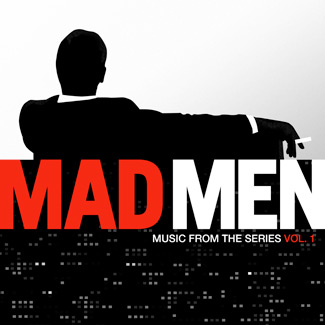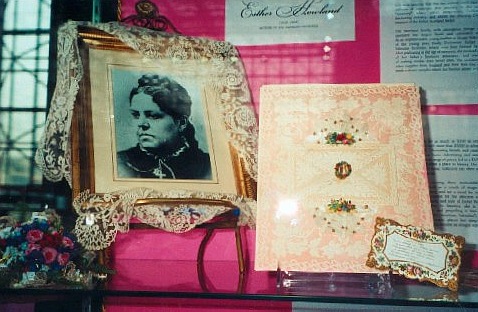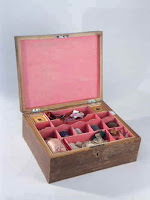With Valentine's Day only ten days off, this seemed a good time to write a blog I've been thinking about for some time. Favorite romantic scenes--first declarations of love, resolutions of seemingly insurmountable conflicts, and other heart stopping moments. Here are a few of my favorites, scenes that bring an ache to my throat and put a smile on my face, many of them scenes I've reread so many times I know them by heart.
In no particular order:
1.
"Oh, Damerel, must
you be foxed just as this moment? How odious
you are , my dear friend!"The extended sequence at the end of Georgette Heyer's
Venetia in which Venetia and Damerel work out their differences has it all--conflict, humor, passion, and poignancy. Damerel is a world-weary rake and Venetia is a sheltered, unmarried woman, yet they're so uniquely themselves that they pop off the page, and so obviously soul mates that you can't but feel a catch in your throat as they battle through to their happy ending.
2.
"I've just won a wager with myself."The scene in
Freedom & Necessity by Steven Brust & Emma Bull in which Susan and James confess their feelings (and do rather more than confess them) may be my favorite literary love scene. It's character-driven, emotionally fraught, erotically frank, and yet still filled with mystery. The final scene between the couple in the book is also lovely, and then there's that fabulous last letter James writes to Susan, not to mention all the moments in between.
3.
"Monseigneur, I would so much rather be the last woman than the first."These Old Shades is a comfort read for me, but it isn't my favorite Georgette Heyer. It isn't even in my top three. And yet I've reread the last scene between Avon and Léonie countless times. It's beautifully written and structured, with a wonderful economy of gesture and emotion that speaks volumes. There's very little inner monologue, and yet the emotional shifts are crystal clear.
4.
"Now forget your responsibility to everyone else for once in your life and give me a straight answer. Do you want me to stay?"
The final scene in
The Armies of Daylight, the third book in Barbara Hambly's Darwath trilogy, may be the most satisfying lovers-getting-together-against-the-odds scene I've ever read, largely because the odds seem so very high and the happy ending so very much not guaranteed. There's also something about this scene that to me is very much parallel to the Léonie/Avon scene, though the words are very different as are the characters. Yet both stories involve heroes who are considerably older than the heroines and who men capable of shaping the world round them (one a wizard, the other a wealthy, powerful duke). Both men are convinced they'll only bring unhappiness to the woman they love and are trying to do the noble thing and give her up (as is Damerel in scene 1. Doing the right thing can be very sexy). The heroines, Léonie and Gil, are very different women. Yet both are trying to convince the man they love that they
know what they want and would much rather face the future with him, hand in hand. Like the scene from
These Old Shades, this one has beautifully delineated emotional shifts.
5.
"I do love nothing in the world so well as you: is not that strange?"I got to do the church scene between Beatrice and Benedick from Shakespeare's
Much Ado About Nothing in acting class in high school. My fellow sophomore Benedick and I barely scratched the surface of what the scene has to offer. But we had a lot of fun, and I still know most of the lines by heart. And every time I see the play, I find new things in this incredibly rich scene, which is funny, touching, romantic, and fraught with dark emotion.
6.
"Placetne, domina?""Placet."I think I studied Latin college partly so I could understand the dialogue between Peter and Harriet in the final scene of Dorothy Sayers's
Gaudy Night. That this scene manages not to be trite or anticlimactic or trite after three books of angst and adventure, countless marriage
proposals, and several brushes with death is no small feat. You can really believe in the balance these two characters have fought their way to, yet there's still enough tension to keep the reading anxiously turning the pages. Harriet's done a great deal of thinking in the pages before, but here, as in some of the other scenes I've mentioned, there's very little inner monologue. And yet every word and detail is weighted with subtext, down to the traffic lights blinking
Yes; No; Wait.
7.
Too late, too late, too late. It had happened.My mom and I used to call this the "Gigi" moment--where the hero suddenly realizes, with the force of a thunderclap, that he's madly in love with the heroine who's been right there under his nose for years and years or pages and pages. The moment when Francis Crawford of Lymond comes to this realization, in
The Ringed Castle, book five of the Lymond Chronicles is all the more powerful for the world "love" never being used.
8.
"I prefer you as you are--tainted and tarnished."The scene where Mary casts caution and calculation aside and crawls into bed with the wounded Lord Vaughn in Lauren's
The Seduction of the Crimson Rose is just lovely. A truly romantic confession of feeling on both sides, made all the stronger by the fact that you know just what it costs these two people to let their guard down and make themselves vulnerable. Both maintain their wonderfully acerbic sides, which makes their confession of their feelings (couched or allude to in character-appropriate terms) all the more powerful.
9.
"A bath and some inoculations are called for, Holmes."I think the "dock scene" from Laurie King's
A Monstrous Regiment of Women may be my favorite proposal scene. Intensely romantic in large part because so much about it is is quite the opposite. Holmes and Russell are filthy and soaking wet and in the midst of an argument
about his having gone after the villain without her. There's a wonderful juxtaposition of acerbic dialogue and passionate breaking free of restraint. As with
Gaudy Night and the Darwath Chronicles, and the Lymond Chronicles, it has extra power from being the culmination of
more than one book of longing. It sends chills up my spine every time I read it (play on words intended, to those familiar with the scene).
10.
"Well," he said, with a transitory gleam of himself, "you're my corner and I've come to hide."Peter and Harriet are the only couple to appear twice on this list. Much as I love the last scene of
Gaudy Night, I think I may be even more fond of the final scene between them in
Busman's Honeymoon. It grapples with a question I'm fond of addressing in my own writing, "what happens after happily ever after?" And it balances the scales by letting Peter need Harriet.
Ten very different scenes. And yet, as I revisited them to write this post, I realized that the very differences in scenes and characters are something the scenes have in common. Each is unique to the characters involved, in the setting and circumstances in which the scene occurs (a sitting room in the French countryside, a rocky hollow in an alternate universe the London docks, an Oxford street) to the circumstances to the words and gestures the characters find to express their feelings. There's also a wonderful tension to all of them, a sense of the fragility of emotions and the bonds between two people and the risk of letting down one's guard. None of them seem quite certain in advance and yet once the characters find their way to each other, you absolutely believe in the possibility of their happiness.
Now it's your turn. What are some of your favorite heart-stopping moments?
 I’ve been reading Doris Kearns Goodwin’s award winning tome “Team of Rivals” (a 754-pager that is surely Kindle worthy) about Abraham Lincoln’s political genius. What strikes me are the side stories about the women, and how so many of them had sooooo many children. Mortality for the mother and children was very high. But no one was immune, rich or poor, to endless childbearing and the risks involved.
I’ve been reading Doris Kearns Goodwin’s award winning tome “Team of Rivals” (a 754-pager that is surely Kindle worthy) about Abraham Lincoln’s political genius. What strikes me are the side stories about the women, and how so many of them had sooooo many children. Mortality for the mother and children was very high. But no one was immune, rich or poor, to endless childbearing and the risks involved.


























How do you feel about power and privilege in the novels you read? Do you prefer to read about characters living an elite and aristocratic life? Do you like to see the dark side of that life or escape in to the fairy tale? Does it make a difference whether the story is set in the past or the present day? Does the current economic situation make you yearn for escapism or make you want stories more grounded in economic reality? Or both?